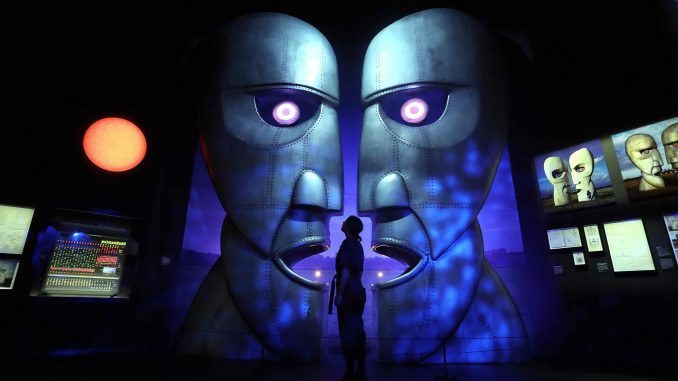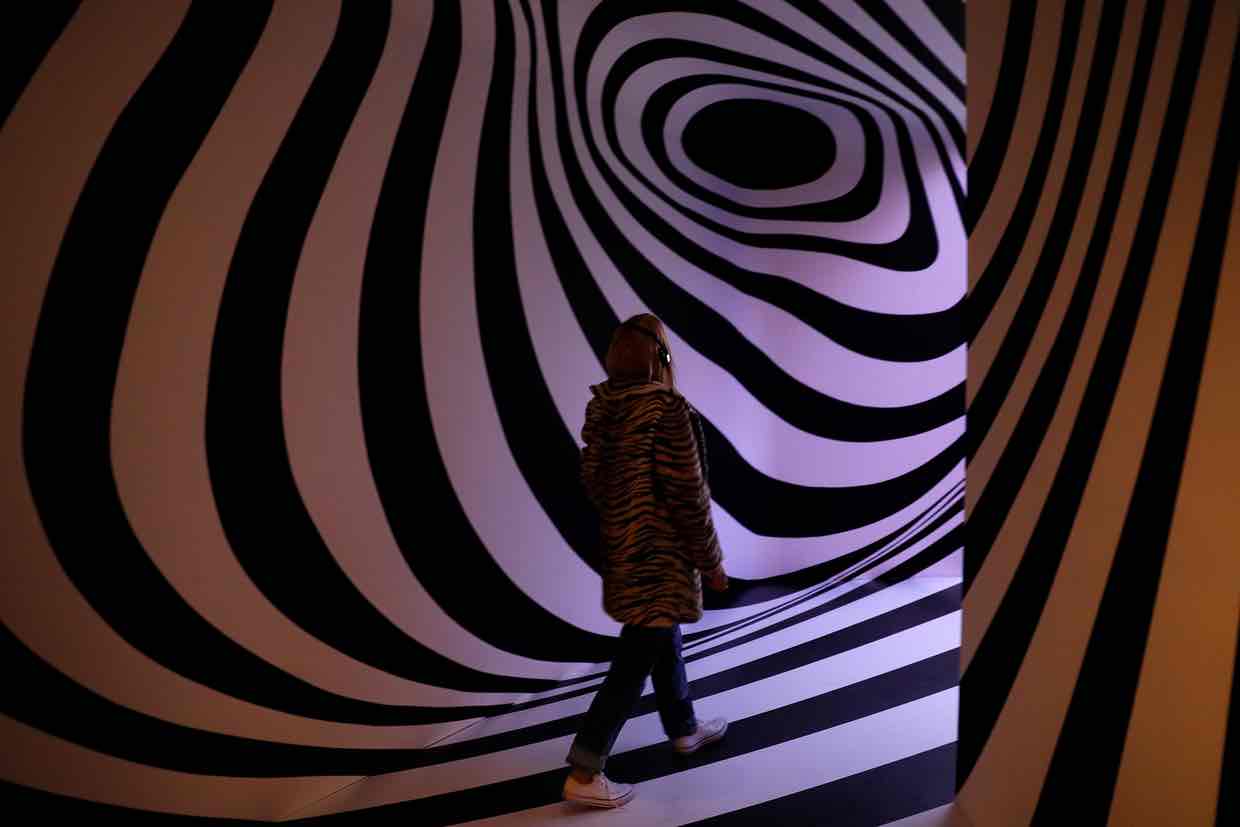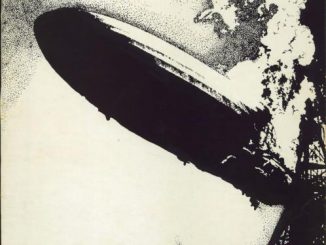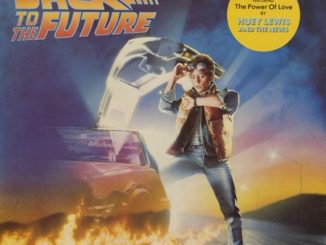
From the Guardian
V&A, London
The refracting prism, the businessman ablaze, the giant inflatable pig: they may be pop’s most anonymous band, but Pink Floyd’s artwork is instantly recognisable – as this stunning V&A show proves

Virtually the first thing the visitor to Their Mortal Remains sees is a quote from the late John Peel regarding Pink Floyd’s legendary anonymity: “They could have joined the audience at one of their own gigs without being recognised.” On the face of it, that should preclude Pink Floyd as a band on which to base a V&A exhibition in the blockbusting vein of 2013’s David Bowie Is, 250m albums sold or not. Then again, as the exhibition makes clear, few bands in rock history have ever been as creative in their attempts to distract attention from themselves.
In truth, a certain anonymity seems to have clung to Pink Floyd from the start, even when they were fronted by Syd Barrett, a man as photogenic and pop-star pretty as he was talented: an early cover feature on the band in Town magazine doesn’t feature them on the cover at all, opting instead for a female model with the band’s psychedelic light show projected over her face. Nevertheless, they endured a brief moment of old-fashioned pop stardom in the summer of 1967, replete with appearances on Top of the Pops and in the teen magazines (“Syd is 5 foot 11 inches tall, with black hair and green eyes – the mystery man of the group and a gypsy at heart”). By all accounts – including the testimonies from bandmates and friends featured in a heartbreaking exhibition video – it was an experience that seemed to wreak almost as much havoc on Barrett’s fragile psyche as the vast quantities of LSD he consumed, hastening his decline.

After Barrett’s irrevocable descent into mental illness, a combination of survivors’ guilt, English reticence and bloody-mindedness forged in the aftermath of their frontman’s departure – when almost everyone, including their own managers, appeared to give Pink Floyd up as a lost cause – seemed to drive the band’s retreat from the limelight. Barrett’s replacement, guitarist and vocalist David Gilmour, had all the right ingredients for rock god status except the character: for all his brilliance as a guitarist, he seemed even more reserved than his new bandmates.
Pink Floyd never appeared on one of their own album covers again after 1969’s Ummagumma, and seem to have spent almost as much time devising ways of diverting their audience’s gaze as they did making music. A groundbreaking quadrophonic sound system built at their behest got almost equal billing on their gig posters, although Their Mortal Remains reveals that the grandly titled Azimuth Co-ordinator looked suspiciously like something knocked together in someone’s shed. At one show, a roadie was obliged to appear on stage dressed as a Tar Monster, complete with a penis fashioned from a washing-up liquid bottle that squirted black fluid over the front rows. The 1972 tour on which they debuted a nascent version of The Dark Side of the Moon was promoted in the press with a photo of the band with their backs to the camera. Come and see us live, but don’t look at us: that seemed to be the message.
Read more here
If you’re looking for Pink Floyd vinyl, CDs, memorabilia, rarities and more, be sure to check the Pink Floyd Collectors Store at eil.com to see our huge range of all things Floyd – new items added daily.




Be the first to comment